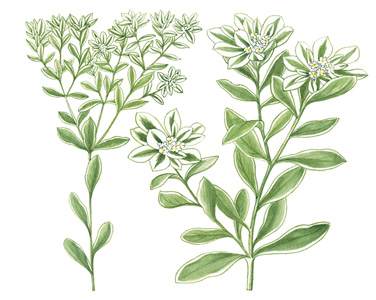Spurge is the common name for a variety of herbs, shrubs, and other plants, many of which are troublesome weeds. Spurges grow in regions throughout the world. They bear small flowers that often form clusters. Spurges often contain a biting, milky juice that may be poisonous. In dry regions, many spurges resemble cactuses because of their spines and fleshy leaves. Other spurges have small leaves and grow low to the ground.

One damaging species, the leafy spurge, ranks as a major weed on the northern plains of the United States and the Canadian prairies. It drives out pasture plants important to livestock. This weed has proved difficult to control because of its deep roots and numerous seeds. In soil, its seeds can remain alive, and able to grow, for up to eight years. The plant’s secondary roots—that is, the branching roots that grow from the plant’s first root—can provide buds that form new shoots. Farmers normally use chemicals called herbicides to control leafy spurge. But scientists are trying to develop biological control agents, such as insects and disease organisms, to combat the weed. Other spurges, including the spotted spurge and prostrate spurge, can damage gardens, lawns, and open areas.
